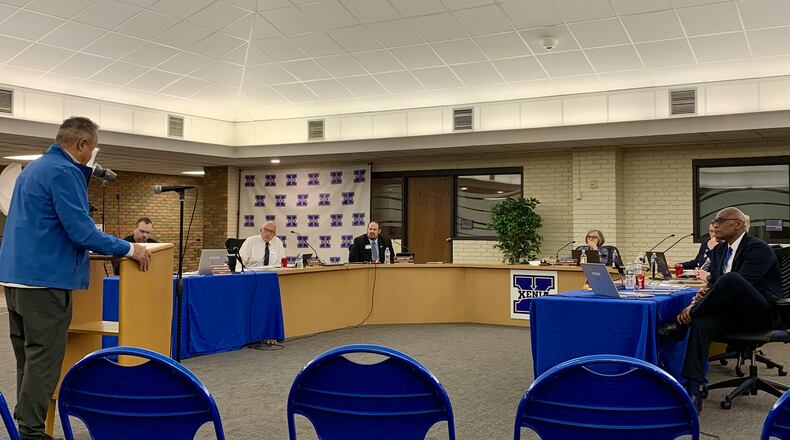Tax Increment Financing is a way for local governments to encourage development by investing would-be tax revenue straight into public improvements for the project area. Under such an incentive, a developer pays “payment in lieu of taxes” (PILOT money) that can be used for water, sewer, environmental remediation, utilities, or even land acquisition under certain circumstances.
In the case of Xenia Market District, this money would go in part to restoring the historic street grid, and establishing utilities for future businesses.
When a Tax Increment Financing redevelopment area is established, the existing value of the property in the area (in this case, the Xenia Market District) is established as the “base” value of the project area, said Emma Mulvaney, a real estate attorney with Columbus-based Frost Brown Todd. The base amount is fixed in time, and property taxes paid on this base amount continue to go to the various taxing bodies as they always have.
The Market District property, which sits in the middle of town, currently generates about $30,000 for the school district in property tax revenue. Xenia Community Schools’ current annual budget is $53 million.
Estimates by the city show that the remaining 25% property tax would generate $4.4 million in new school district revenue over the course of the 30-year TIF, if the project is successful, as well as another $4 million in income tax from future residents of the townhomes.
An analysis by the city of Xenia shows the cost of the public works phase of the Market District, between construction cost, bond interest, and fees, to be about $35 million over 30 years.
If the Market District project fails, the district loses nothing, David Conley, owner of Rockmill Financial and financial advisor to the school district, told the board on Monday. However, if the board has to go back to its voters for levy funds in the future, they need to be able to justify the agreement with the city to Xenia voters, Conley said, adding that since 1980, district has gone to voters for money 50 times.
“This is an economic development desire, it is not guaranteed,” Conley said. “The board’s action, or inaction, does not guarantee success.”
During discussion on Monday, School Board President Mary Grech said she reached out to five different school districts that had entered into similar TIFs with properties developed by Dillin, including Perrysburg, near Levis Commons in northern Ohio and Miamisburg, near Austin Landing. All five said they would “absolutely” do it again, Grech said.
“The only downside to the district has been the continuous drove an influx of new students to the district which, although not the fault of the development, was the unintended consequence of having such a great area in our community,” Perrysburg district leadership wrote to the board.
“From what I understand, every TIF is different,” Grech said. “I can tell you for Austin Landing ... They weren’t started to be made whole — and you’ll hear that terminology a lot — until year 12. So they agreed up until year 12 to accept the base, and then they started getting money, lagging from it was implemented.”
The city of Xenia and several county agencies have also agreed to divert their own future property taxes from the Xenia Market District in a similar manner towards the project, assuming the school district agrees.
“From my perspective, they (the city) have put together a genuine offer,” Conley said. “They have done everything they can do … it’s just not enough.”
The board of education has no deadline by law to approve or reject any TIF agreement. Conley encouraged board members to consider all the factors before coming to a decision. Negotiations between the district and the city remain ongoing.
“(The Market District) is very blighted, it’s very depressed. So we are 100% for further revitalization, and it needs to be done,” said board member Bill Richey. “However, I’m not sure it needs to be done on the backs of Xenia schools.”
Xenia Superintendent Gabriel Lofton last week sent a district-wide email to parents opposing the tax financing agreement, saying it would “have serious long-term consequences and implications for the school district’s financial health and stability.”
The city of Xenia told the Dayton Daily News that members of the board of education had not yet been given any draft of an agreement at the time, but declined to comment further.
In a subsequent email to the school board, City Manager Brent Merriman told board members the superintendent’s letter contained “factual errors and omissions,” adding that, “the city is amenable to helping protect value addition to your tax base, and including such narrative in an agreement, while also securing monies necessary to get the project moving forward in the first place.”
“The Market District project is designed to be a transformative project; it’s not intended to merely be a neat place to hang out,” Merriman said. “It is the physical manifestation of a core strategy which centers on overall community marketplace value improvement; the value of improving the economic marketplace will far exceed the actual value of the development’s new taxable improvements.”
Credit: Jim Noelker
Credit: Jim Noelker
About the Author



